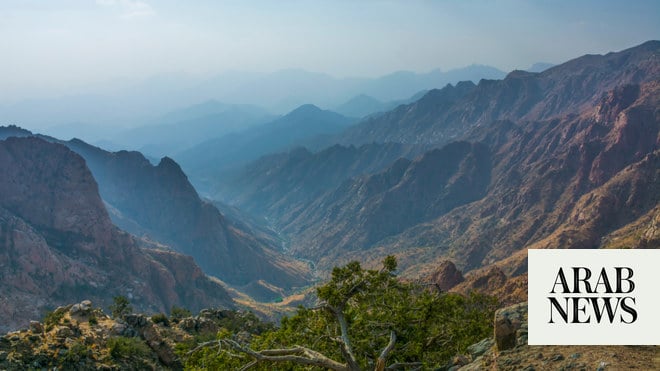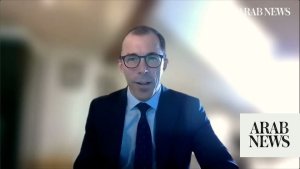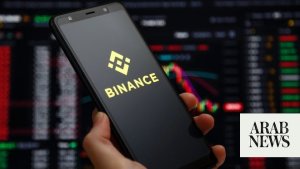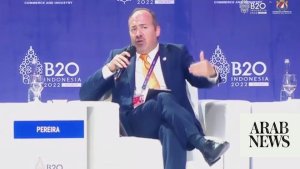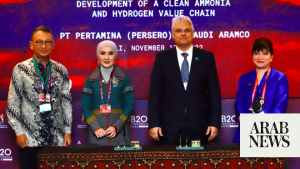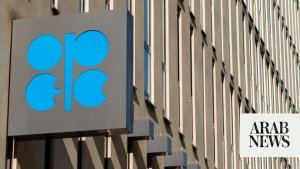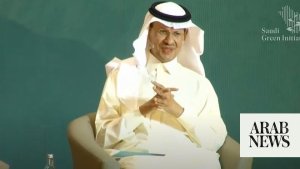RIYADH: Saudi Arabia has kicked off a broad green awareness campaign on the eve of key sustainability summits.
The Kingdom has released detailed information cataloguing its climb up the Green Future Index 2022, issued by MIT Technology Review, as it seeks to take the lead on developing solutions to the environmental challenges facing the globe.
Saudi Arabia’s 10 place rise up this year’s list comes after programs and initiatives led by Crown Prince Mohammed bin Salman, notably the Saudi and Middle East Green Initiatives and the establishment of royal natural reserves to increase vegetation in Saudi Arabia.
With the aim of achieving several objectives of Saudi Vision 2030, SGI, MGI —and the Circular Carbon Economy approach that the initiatives aim to advance — are key pillars to develop the roadmap to realize the Kingdom’s ambitious climate objectives.
The inaugural SGI Forum in October 2021 saw the announcement of a first suite of more than 60 new initiatives, with over SR700 billion in investments.
The second editions of the MGI Summit and the SGI Forum, held under the theme ‘From ambition to action’, will take place next week in tandem with COP27 in Sharm El Sheikh, Egypt.
The MGI Summit will be held on Nov. 7 and the SGI Forum will be held on Nov. 11-12.
Within an overarching vision to pave the way towards net-zero, SGI unites all climate action efforts within the Kingdom to fulfil three key targets: reducing carbon emissions by 278 mtpa by 2030, planting 10 billion trees across Saudi Arabia, and placing 30 percent of the Kingdom’s land and sea under protection.
The Green Future Index report shows that the Kingdom has moved up in the Carbon Emissions Pillar by 27 places, ranking 19th globally. The progress was driven by the Kingdom’s announcement that it would raise the carbon-emissions target in its nationally determined contribution to 278 mtpa by 2030, more than double the 133 mpta announced in 2015.
What also contributed to the Kingdom’s progress was the announcement of its aspiration to reach net-zero by 2060.
Depending on the maturity and availability of the necessary technologies, this ambitious goal will be achieved through the implementation of the CCE approach, in line with the Kingdom’s development plans and economic diversification efforts, and consistent with the ‘dynamic baseline’ stipulated in the Kingdom’s NDC, ensuring the Kingdom maintains and enhances its leading role in the security and stability of energy global markets.
The Kingdom has also launched, in this regard, a national program for the Circular Carbon Economy, a comprehensive approach endorsed by G20 leaders during the Kingdom’s presidency of the summit in 2020.
In the Energy Transition Pillar, the Kingdom advanced 12 places, ranking 12th, as well as ranking 1st in the Renewable Energy Growth Indicator within the same pillar. This progress was led by the Kingdom’s announcement that it would raise the share of renewable energy in the energy mix used for electricity production to 50 percent by 2030.
In the Green Society Pillar, the Index’s 3rd pillar, the Kingdom ranked 26th globally. Some of the most notable efforts in this regard were the Saudi Energy Efficiency Center, the launch of more than 27 specifications and regulations to increase energy efficiency in equipment and buildings, the adoption of the Saudi Corporate Average Fuel Economy standard (Saudi CAFE), the incorporation of Tarsheed Company to implement energy efficiency projects at government buildings and facilities, and the installation of more than 10 million smart electricity meters.
Three new factors have also contributed to enabling the Kingdom to compete with the rest of the world in this area: innovation in the energy sector, innovative projects within the Carbon Circular Economy National Program, and moving forward in the uses of hydrogen applications.
Furthermore, the Kingdom advanced 13 positions in the Climate Policy Pillar, driven by its update of NDC, announcement of a carbon capture, utilization and storage (CCUS) hub, and establishment of the Riyadh Voluntary Exchange Platform for offsets and carbon credits within the Middle East and North Africa, the region’s primary platform and destination for companies and sectors that aim at reducing carbon emissions.
As for green finance, the Kingdom has developed a holistic framework to help achieve its net-zero ambition by 2060. This framework is in line with the Paris Agreement and CCE approach and will allow entry into global environmentally-friendly debt markets.
First launched in 2021, the Green Future Index is an annual ranking of 76 countries based on their ability to develop a sustainable, low-emissions future. It also measures the degree to which these economies are pivoting to clean energy, in industry, agriculture, and society through innovation, policy, and investment in renewables.
The Green Future Index is divided into five pillars: Carbon Emissions, Energy Transition, Green Society, Clean Innovation, and Climate Policy. Countries are evaluated through these pillars, and each country is given a general pillar-wise ranking. Within each pillar, there are other indicators in which countries are also ranked.



